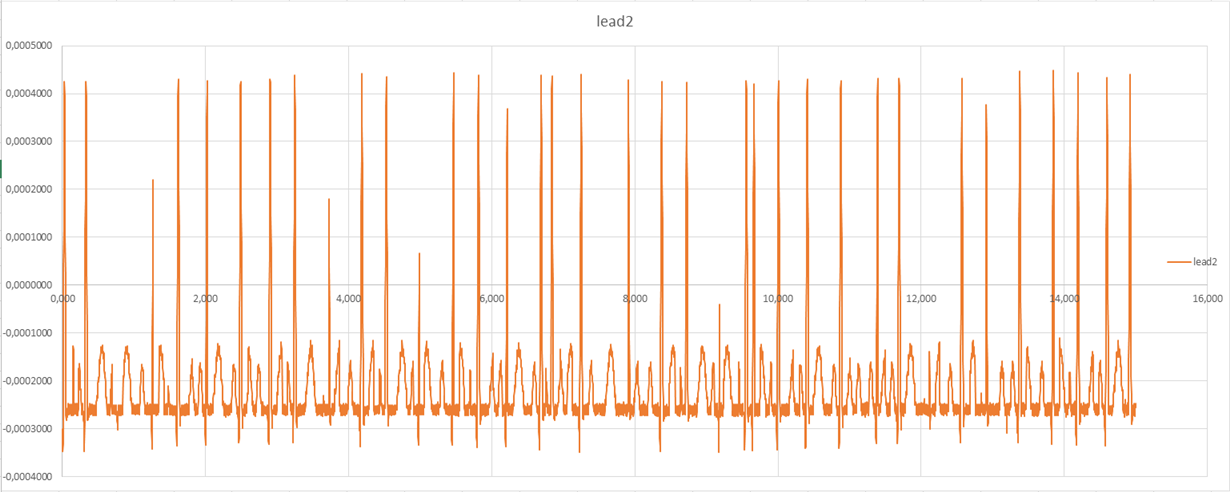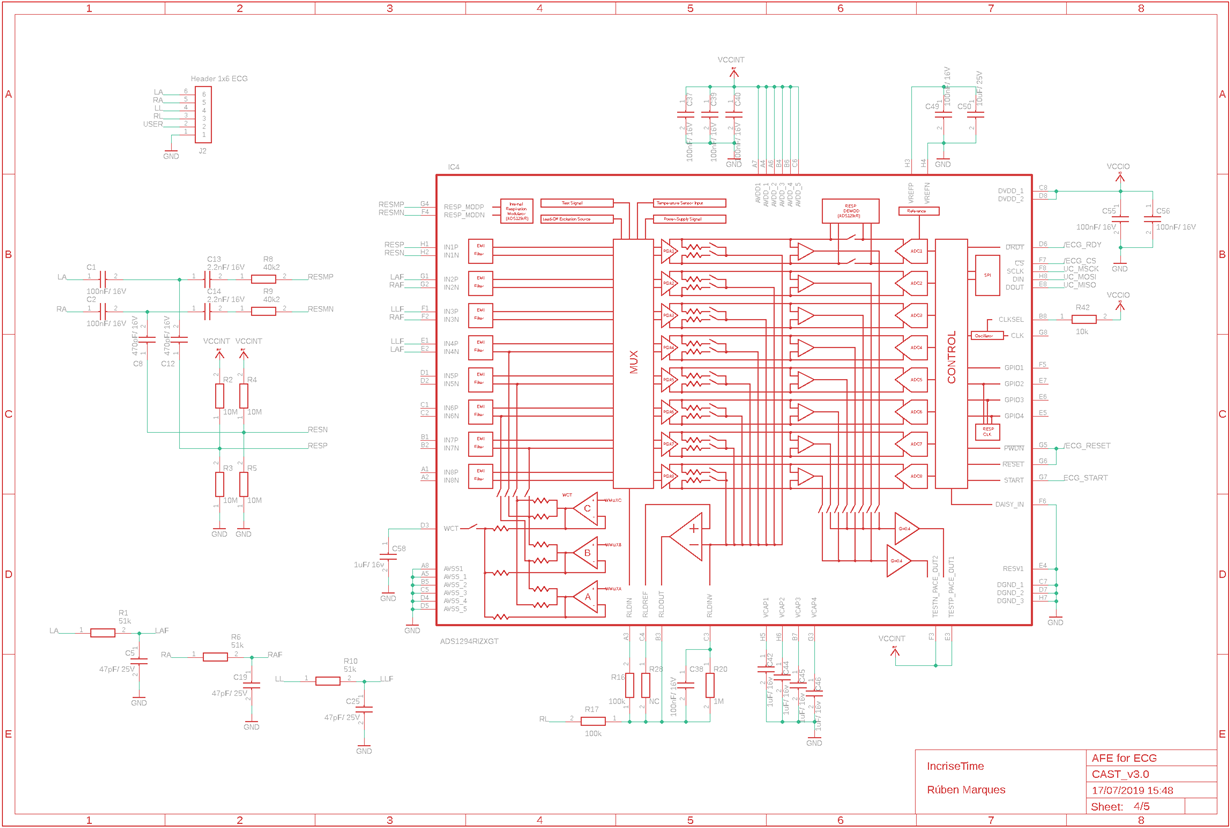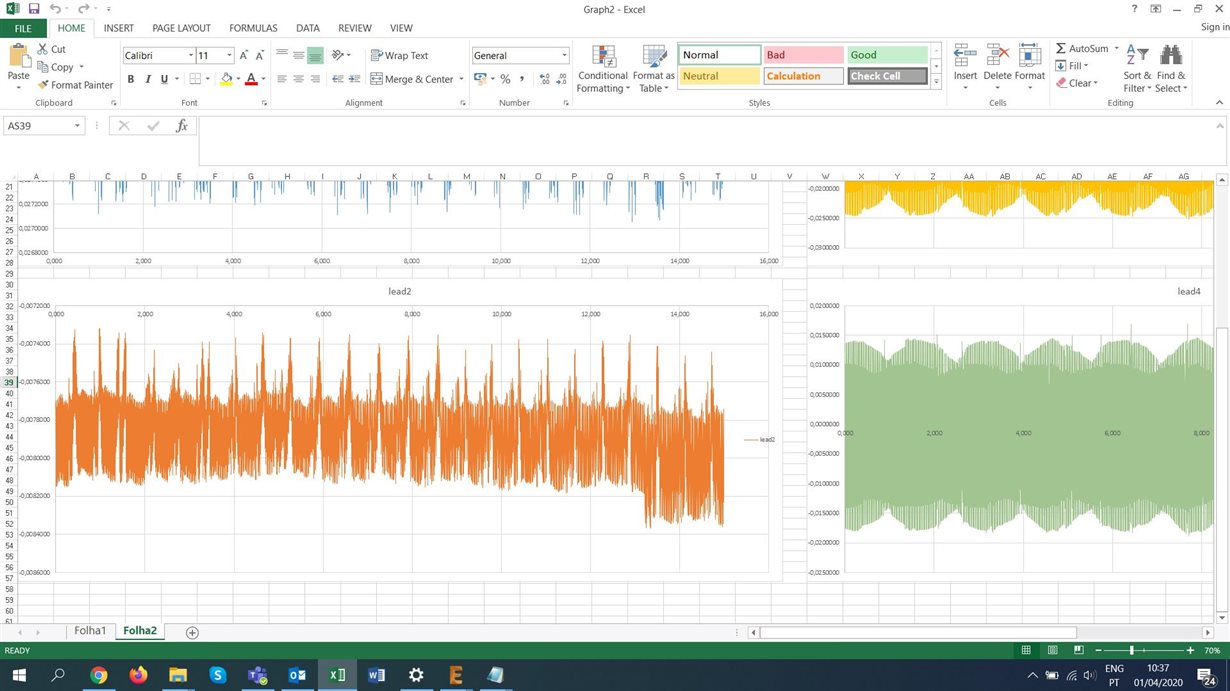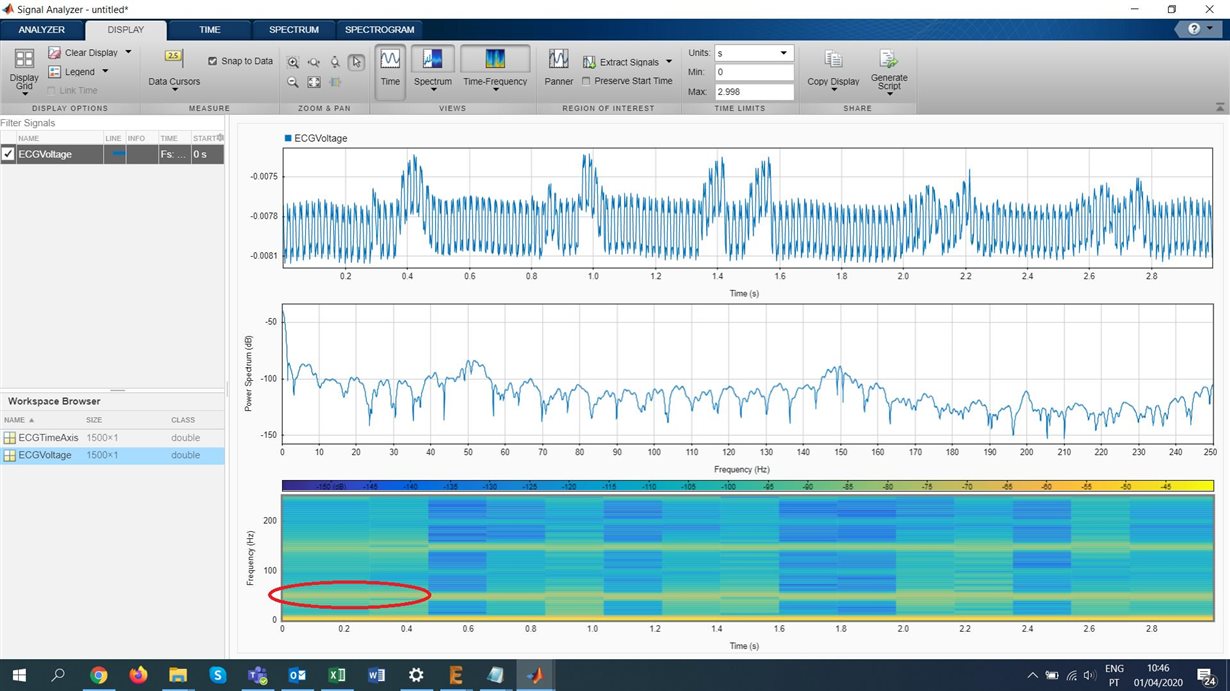Other Parts Discussed in Thread: ADS1298
Hi!
My company is developing a product, with the main purpose of acquire a 3 lead ECG signal from a patient t-shirt. For that, I'm using a ADS1294R. So, my main problem here, is: when i connect my product to a ECG simulator ( Model: AMPS-1 | S/N: PS08060041 ) I can actually see the ECG graph with low noise like you see in the image bellow:
But, when I connect it to my shirt/eletrodes, I cannot see anything good. The next image show the Real ECG measurement:
I'v tested different electrodes in different locations, but nothing seems to work.
I've review all the software and hardware and nothing seem to be discordant with the datasheet information. However, its my first time, working with this kind of technology, so I may be missing something. I would like you to review my hardware and software configurations and, possibly, help solve my problem.
I will post all the information i can give you in the next topics:
Hardware Configuration:
- Vref: 2.4V Internally
- AVDD: 3.3V
Software Configuration:
- LP Mode in 500 sps;
- Read data in continuous mode;
- PGA gain = 4;
- CONFIG1 = 0x05;
- CONFIG2 = 0x30;
- CONFIG3 = 0xCC
- CH1SET, CH2SET, CH3SET, CH4SET = 0x40;
- RLD_SENSP = 0x0F;
- RLD_SENSN = 0x0F;
- RESP = 0xF2;
- CONFIG4 = 0x20;
Thanks in advance.
Best regards,
André Vaz






